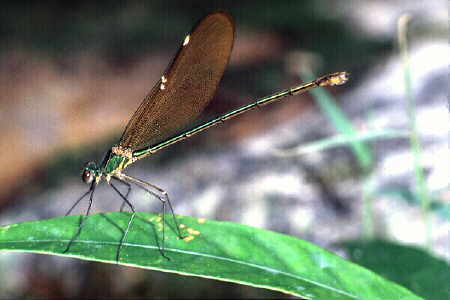
|
Damselfly 1: This species is usually found beside clear, flowing
water in the forest or at the forest fringe. It is an impressive flier that often
skims the surface of running water, with wings flashing in the sunlight. One Odonata
enthusiast has identified the
species in this photo as Neurobasis chinensis chinensis (female).
|
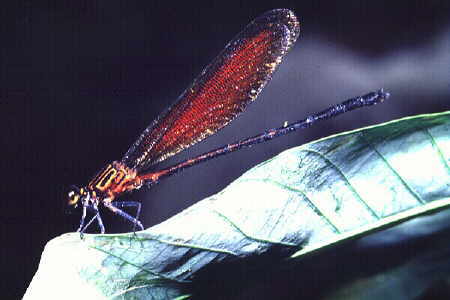
|
Damselfly 2: This is another species found only in the forest or at the forest
fringe near running water. An Odonata enthusiast from Japan has identified this species
as Euphaea ochracea ochracea (male).
|
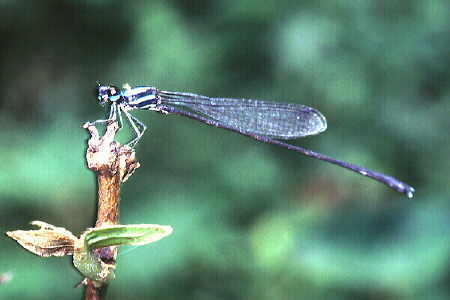
|
Damselfly 3: A common species found in secondary growth and also
at the forest fringe. I wish to thank the Odonata enthusiast from Japan who has
identified the damselfly in this photo as Indocnemis orang (male), and also
provided the identity of the two preceding species.
(ID-AS)
|
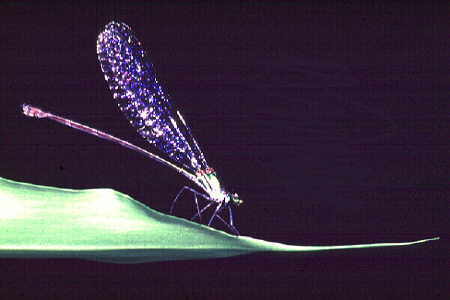
|
Damselfly 4: A common species found both in secondary vegetation and
at the forest fringe. The sparkle in the transparent wings were caused by the light
from my camera flash.
|
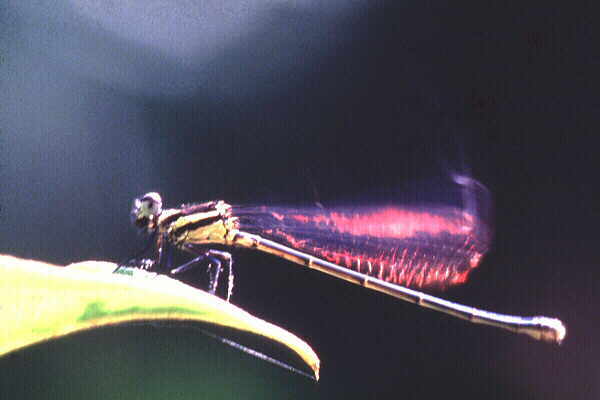
|
Damselfly 5: There was a time when I was younger, my eyesight was
better, and I tried backlighted shots. This damselfly moved its wings
at the moment I clicked the shutter, bending the rays of the late afternoon
sun into fiery hues of the light spectrum.
|

|
Damselfly 6 (Ceriagrion cerinorubellum): This
damselfly species is not uncommon. It can be found around the edges of man-made
lakes or ponds in public parks. There was an article about its mating habits in a
locally published nature magazine some years. Yes, I’m still
keeping that magazine.
|
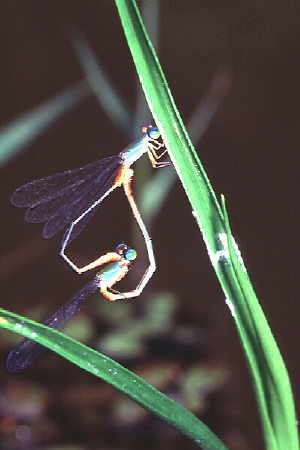
|
Damselfly 7 (Ceriagrion cerinorubellum): A pair locked
in mating wheel formation, with the male clinging to the leaf of an aquatic plant.
|
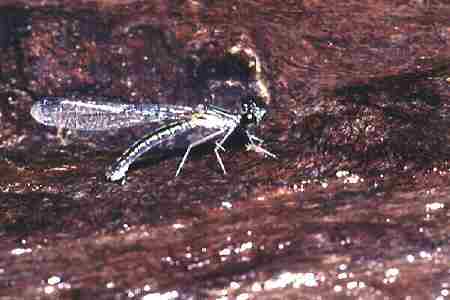
|
Damselfly 8: With its posterior end pushed into a half-sunken log in a river,
this damselfly appeared to be ovipositing. Dragonflies and damselflies lay
their eggs on or near vegetation in water.
|
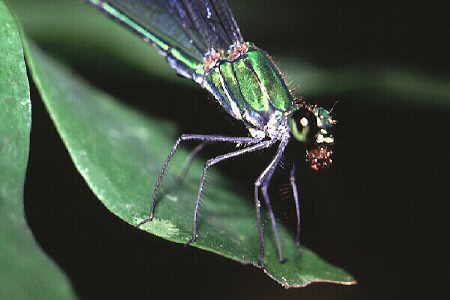
|
Damselfly 9: Damselflies catch their prey on the wing. They watch from their
perch for small insects that wander into their hunting territory. When they have caught
one, they return to their perch to eat.
|
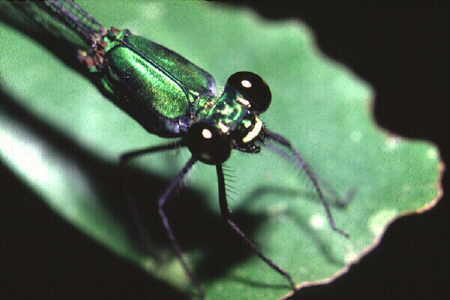
|
Damselfly 10: An overhead shot showing the large bulging eyes of a
damselfly. Like dragonflies, these “fighter pilots” of the insect world
have very keen eyesight
that enables them to catch other, often very small, insects on the wing.
|

